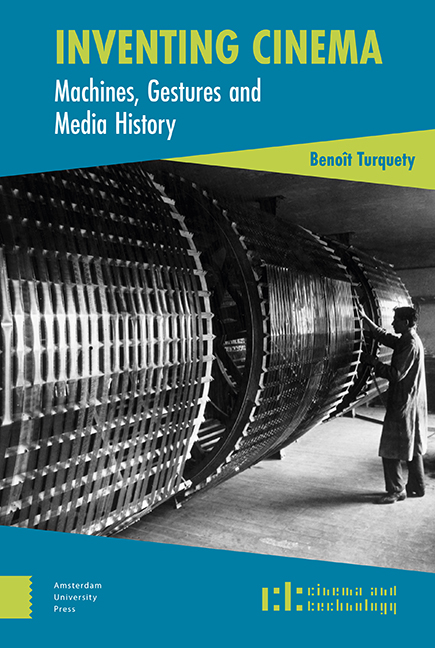Book contents
- Frontmatter
- Dedication
- Contents
- Acknowledgements
- Introduction: The Problems of Digital Cinema
- 1 The Why and How of Machines
- 2 Invention, Innovation, History
- 3 The Invention of the Problem
- 4 The Invention of the Cinématographe
- 5 ‘Natural Colour Kinematography’, a New Cinema Invention : Kinemacolor, Technical Network and Commercial Policies
- 6 Epilogue: From the Trembling of Film to the Stability of the Digital
- Bibliography
- Index
1 - The Why and How of Machines
Published online by Cambridge University Press: 21 November 2020
- Frontmatter
- Dedication
- Contents
- Acknowledgements
- Introduction: The Problems of Digital Cinema
- 1 The Why and How of Machines
- 2 Invention, Innovation, History
- 3 The Invention of the Problem
- 4 The Invention of the Cinématographe
- 5 ‘Natural Colour Kinematography’, a New Cinema Invention : Kinemacolor, Technical Network and Commercial Policies
- 6 Epilogue: From the Trembling of Film to the Stability of the Digital
- Bibliography
- Index
Summary
Abstract
This chapter first establishes the fundamental definitions necessary to the construction of the approach: technique and technology, machine and dispositif. It discusses Foucault, Simondon, Crary, and Albera/ Tortajada in the process. It then argues that there is a fundamental link between machines, images, and movement within the history of culture. It analyses the apparatuses invented by Filippo Brunelleschi during the Renaissance, before exploring the depiction of machines from the Renaissance to industrial drawing. Given these relations, this chapter argues that machines should be considered as archives, materializing the history of performance gestures, and of the system they have been a part of. A detailed analysis of the camera obscura and its historical variants, connecting the histories of art, of spectacles and of science, exemplifies the approach.
Keywords: Machine, technology, dispositif, Gilbert Simondon, camera obscura, media epistemology
Today's proliferation of media, their base and equipment, has given urgency to the need to theorize the issues they raise and, consequently, have brought about the return to film theory and to media theory more generally of a vocabulary borrowed from a description of what Gilbert Simondon called ‘technical objects’: devices; instruments; machines; technologies; techniques; dispositifs. Because of the structural importance of these terms to the approach taken in this volume, it is important that we establish distinctions between them.
A Few Definitions
Technique/Technology
Historically, ‘technology’ is a term initially used to describe a field of study that began in English- and German-speaking milieux, first by Christian Wolff in 1728 in his Preliminary Discoujrse on Philosophy in General, in which he invented the concept in its modern sense. His work had no concrete consequences, but was adopted more successfully as a simultaneously theoretical and pedagogical project by Johann Beckmann in 1772 and then in 1776 in the latter's Anleitung zur Technologie. Traces of it can be found in English in Jacob Bigelow's Elements of Technology of 1829. The goal of technology was to describe, classify, and analyse the technical operations of the mechanical arts, or ‘the science of the arts and of the works of art,’3 in the words of Christian Wolff.
- Type
- Chapter
- Information
- Inventing CinemaMachines, Gestures and Media History, pp. 25 - 74Publisher: Amsterdam University PressPrint publication year: 2019



